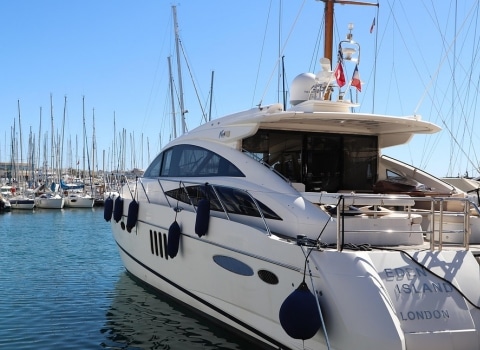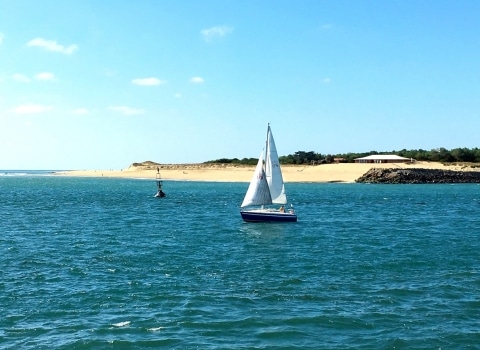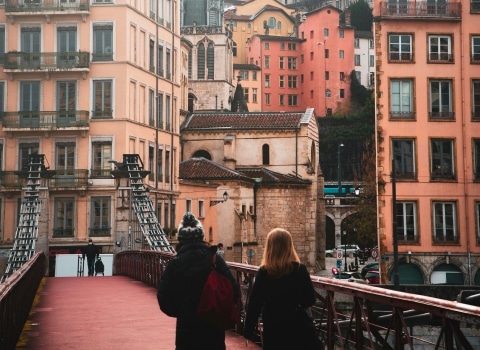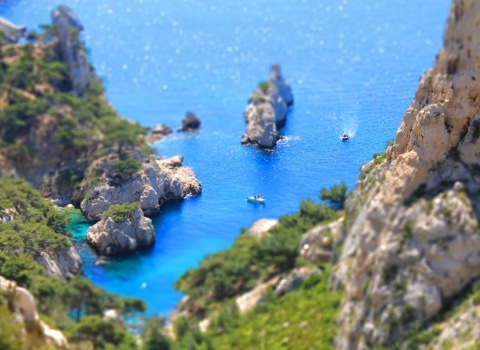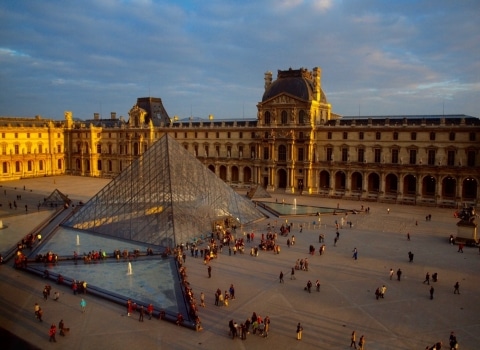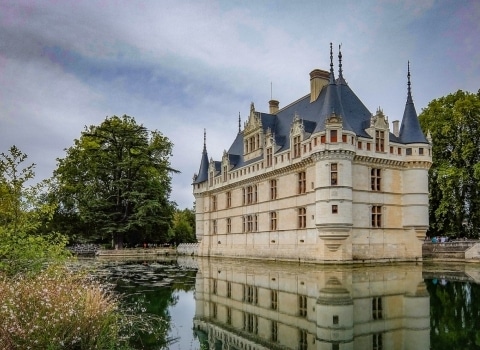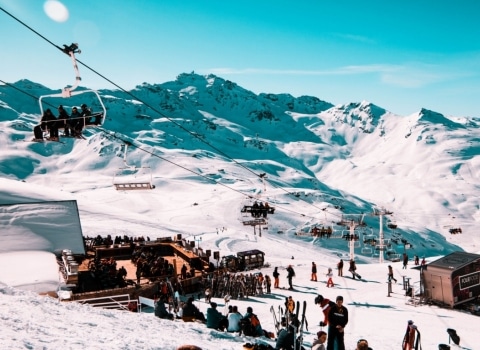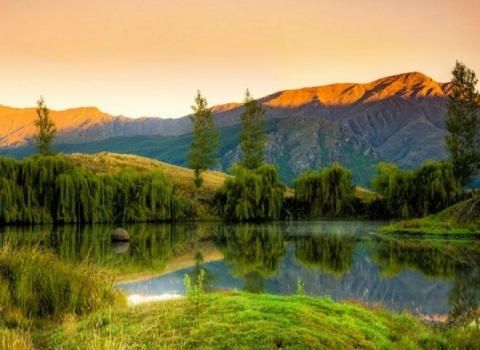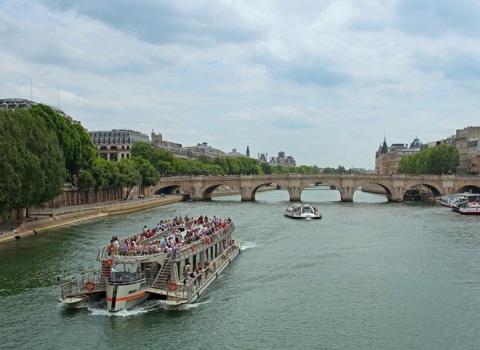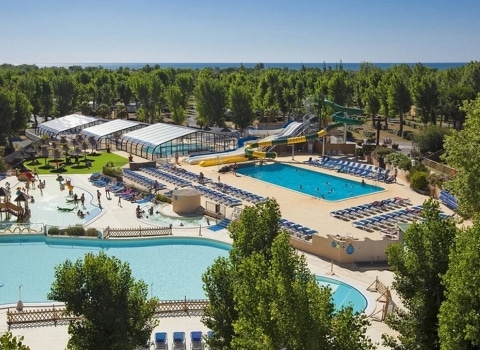Bordeaux must-sees Heritage
Bordeaux doesn’t shout. It never had to. Walk its streets—those long, deliberate avenues lined with stone facades—and the city reveals itself in fragments. A carved window. A quiet square. A scent of bread rising just before noon.
In Nouvelle-Aquitaine, Bordeaux sits like a well-worn book, already opened. The kind with margins scribbled in and pages that don’t quite lie flat. History clings to the walls, but the rhythm now is something else—students on bikes, cafés spilling out onto the sidewalk, conversations that stretch long into the night.
Sit with a glass of wine—anywhere, really. The options don’t end. Some places lean fancy. Others, more casual, feel better after a day on foot. And if the wine is local, which it usually is, chances are it tells you something about the land around it. Not in big statements. Just hints—soil, sun, time.
The vineyards aren’t far. Neither is the ocean. One direction leads to Médoc, to Saint-Émilion, names that have shaped palates for centuries. The other, toward wide beaches and pine forests where wind moves without pause. Somewhere in between, rivers and villages and stretches of quiet countryside wait without advertising themselves.
Those unsure where to begin might find it easier with Bordeaux’s tour guides. People who live here. People who know the quiet places behind the obvious ones, who don’t recite, but share.
Discover the historic center
To walk through Bordeaux’s old center is to drift between layers of time. The past doesn’t sit behind glass here—it lives in the facades, the worn steps, the quiet squares. Four places in particular speak louder than others, each one offering a piece of the city’s story.
Miroir d’eau
Just across from Place de la Bourse, the Miroir d’Eau feels less like a landmark and more like a fleeting moment caught in stone and sky. A shallow pool, no deeper than a whisper, reflects the buildings behind it with eerie precision—until mist rolls across and everything vanishes. Designed by Michel Corajoud and Jean-Max Llorca, it’s the largest water mirror in the world, though that hardly matters once you’re standing beside it.
Best times to visit: Mornings are calm. Light catches the water gently, and the square still feels half-asleep. Midday brings energy—kids run through the mist, parents pause nearby. But it’s at night that something shifts. Lights from the square stretch out across the surface. The city doubles itself. A scene you don’t forget easily.
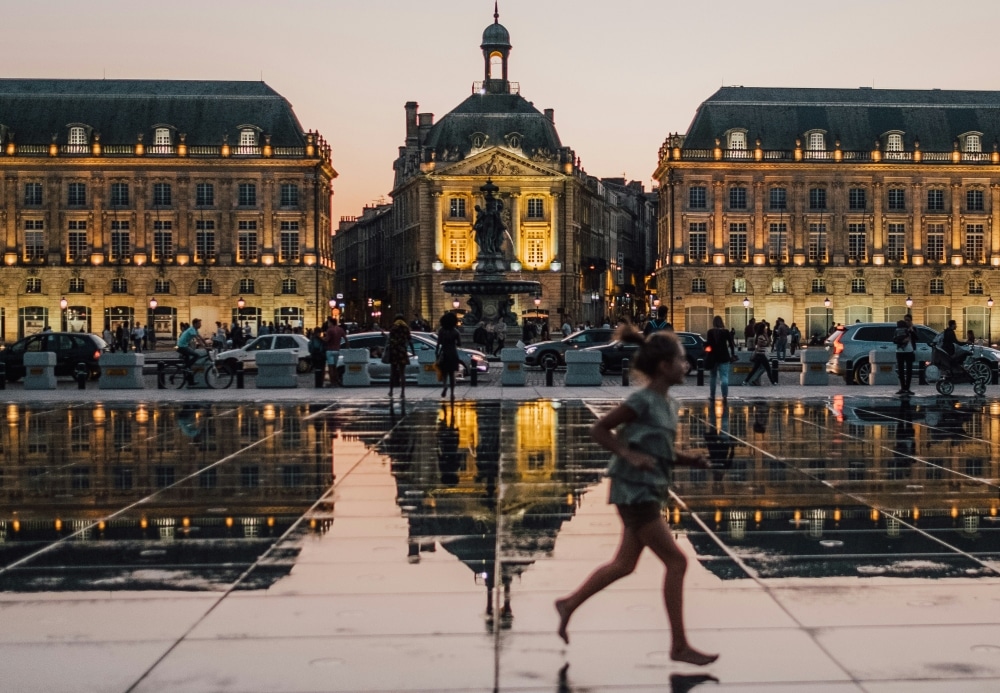
The Place de la Bourse
Few places in Bordeaux say “grandeur” without saying a word. The Place de la Bourse does. Built in the 18th century under the eye of Ange-Jacques Gabriel, it balances elegance with scale. Neoclassical symmetry, stone façades, tall windows. At the center, the Trois Grâces fountain softens the geometry with movement.
Why it’s a must: More than a postcard, this is where people actually pause. To meet, to breathe, to look. Set along the Garonne, it feels both open and anchored. Whether in sunlight or under streetlamps, it holds your gaze. And reflected in the Miroir d’Eau? Even more so.
Saint-André Cathedral
Saint-André doesn’t announce itself—it waits. Gothic and grounded, the cathedral took centuries to build. Eleanor of Aquitaine was married here in 1137, long before most of the stones even settled. The stained glass catches light like it remembers everything.
Why it’s a must-see: It’s not just the size, or the spires. It’s the way the walls carry weight. Inside, there’s a hush that doesn’t feel staged. Climb the Pey-Berland tower if your legs allow it. The city spreads out in every direction, and suddenly, Bordeaux feels smaller. In a good way.
Bordeaux’s Grand Théâtre
Built in 1780, the Grand Théâtre still wears its age well. Designed by Victor Louis, the building has hosted centuries of voices—operas, ballets, dramas, whispered conversations in the wings. Its marble staircase curves like a river, and inside, gold leaf catches every glint of light.
Why it’s a must-see: You don’t need to love opera to be moved by the space. The building itself performs. Take in a show if timing allows. Or join a guided visit—there’s something fascinating about seeing the backstage, the hidden corridors, the places where time settles between rehearsals.

Emblematic monuments
Bordeaux carries its history in stone. Not grandstanding—just there, steady and quiet. A few places, though, stand out. Landmarks that tell you where you are without needing a sign.
Tour Pey-Berland
Built in the 15th century, the Tour Pey-Berland stands just beside the cathedral it was meant to protect. Its bells, too heavy for Saint-André’s foundations, needed their own tower. So they got one—elegant, vertical, unmistakably Gothic. It’s become part of the skyline now, a finger pointing toward the clouds.
Panoramic view of Bordeaux: Climb the 229 steps. Legs may complain, but the view rewards the effort—rooftops in all directions, the Garonne tracing its path, towers and domes breaking the line of tiles. From up there, the city feels open, like a map slowly unfolding.
Rohan Palace
Behind its quiet façade, the Palais Rohan holds more than administration. Once home to archbishops, now Bordeaux’s city hall, it stands as a relic of 18th-century civil architecture—balanced, reserved, elegant. Inside, the rooms still carry the weight of ceremony.
Activities nearby: Step outside and you’re already on Place Pey-Berland, where the pace picks up. Streets filled with shops, cafés, small surprises. Some days, there are markets. Other times, just locals passing through. Don’t miss the Musée des Beaux-Arts nearby—less crowded than you’d expect, and richer than it seems at first glance.
The Cailhau Gate
Porte Cailhau looks like it came from a storybook, but it was once the main entrance to Bordeaux—built in 1495 to mark a military victory. Today, it stands half-hidden among apartment blocks and cafés, its medieval shape intact. Towers, battlements, and sculpted details that hint at another time.
Activities to do nearby: Beyond the gate lies the Saint-Pierre district. Cobblestone streets twist gently, lined with restaurants, small shops, and the kind of atmosphere that feels like it never tries too hard. Follow the path to the Garonne. The river walks well at sunset.
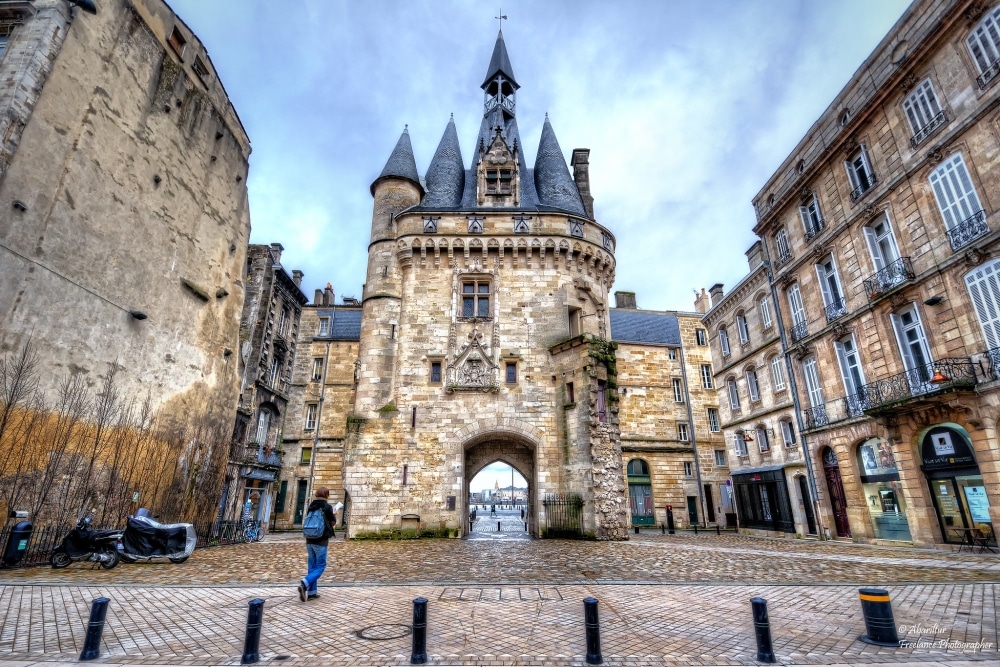
Neighborhoods to Explore
Each part of Bordeaux tells its story differently. Some speak in whispers. Others in music, markets, and late-night chatter. Here are a few corners worth getting lost in.
The Chartrons District
Chartrons has changed over the years. Once a merchant’s quarter, now a neighborhood with rough edges softened by cafés and art galleries. Warehouses turned into lofts. Wine traders replaced by wine bars. Still, the past shows through in the stone.
Restaurants and shops to discover: Walk along the river, and hunger won’t last long. Le Bistrot des Quinconces serves local dishes with precision, while La Boca Foodcourt throws together flavors from everywhere under one roof. Rue Notre-Dame is a mix—antiques, odd finds, bits of style in forgotten storefronts.
Saint-Michel and the Big Bell
Saint-Michel doesn’t pretend. It’s layered, alive, a little messy—in the best way. The basilica rises high, its spire visible from almost anywhere. Nearby, the Grosse Cloche hangs in its medieval arch, more symbol now than signal.
Tour and activity recommendations: Start early. Climb the basilica for a view that’s all angles and slate. Then drift into the Capucins market—fragrant, noisy, unapologetically local. Try something unfamiliar. Wander. Stop for lunch somewhere that smells good. There’s always something happening, but not everything is on a schedule.

The Saint-Pierre district
Saint-Pierre is where the city feels oldest—and most alive. Narrow lanes, old stones, café chairs scraping cobblestones. It’s where Bordeaux meets for dinner, for drinks, for conversation that spills into the street. The Place de la Bourse is just next door, with the Miroir d’Eau catching the light.
Restaurants and shops to discover: Le Petit Commerce has a reputation—fresh seafood, no fuss. Le Bar à Vin balances its name well: wines from the region, small bites, good mood. Around every corner, there’s something to buy, to taste, or simply to notice.
The Saint-Seurin District
Farther from the buzz, Saint-Seurin slows things down. A more residential side of Bordeaux, but not without its layers. The basilica here predates almost everything else in the city. Romanesque, quiet, with crypts that carry centuries of silence.
Recommendations for visits and activities: Walk slowly through the church. Let the space do what it does. Then head to the Public Garden—not far, and full of calm. You’ll find benches, shade, maybe a heron if the timing’s right. La Table de Seurin nearby offers meals that don’t need describing—they speak for themselves once they arrive. Or just sit outside with a coffee. No hurry. That’s kind of the point.
Museums and Cultural Centers
Bordeaux doesn’t just preserve its past—it reinterprets it, questions it, and builds on it. Its museums and cultural spaces feel alive, layered, sometimes unexpected. A few of them stand out—not just for what they show, but for how they make you feel while you’re there.
The City of Wine
The Cité du Vin isn’t just a museum. It’s more like a journey. One that swirls through history, geography, and taste—all in a building shaped like a swirling glass, or maybe a grapevine twisting in the wind, depending on who you ask. Inside, the experience is immersive. Screens, sounds, smells. Wine not just as drink, but as story—across cultures, centuries, landscapes.
The permanent exhibition pulls you into the rituals, the tools, the language of wine. But it’s the Belvédère, high on the eighth floor, that shifts everything. A glass of wine from somewhere far away, and Bordeaux laid out below in the light. Not a bad way to end a visit. Workshops, tastings, and rotating exhibits fill in the rest—there’s always something more to stay for.
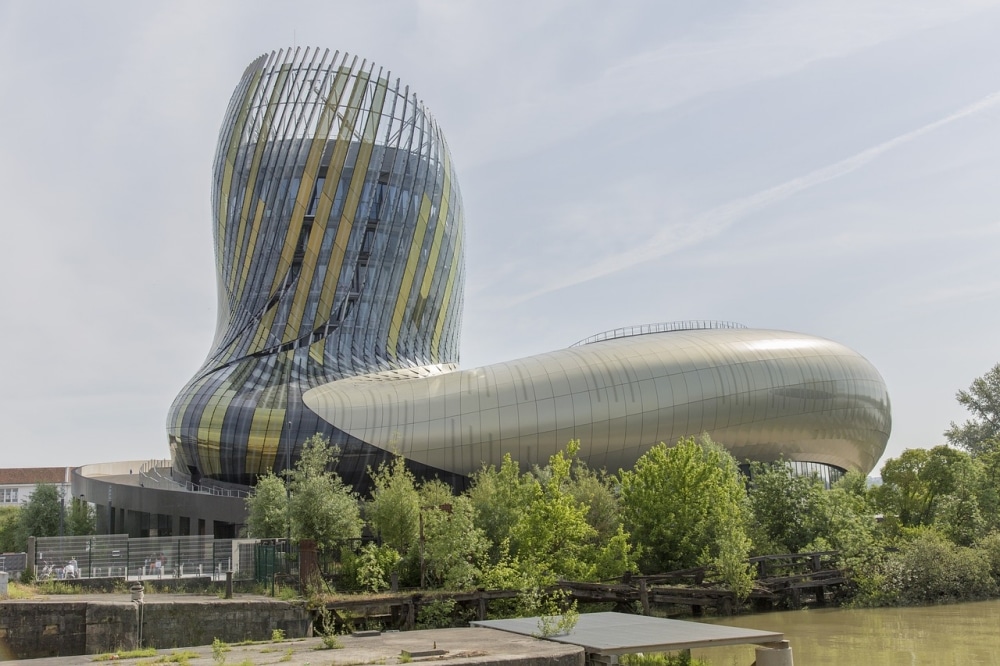
The Aquitaine Museum
The Aquitaine Museum starts quietly. Objects behind glass. Stones with names carved long ago. But the deeper you go, the more the story opens. It’s not just about Bordeaux. It’s about everything that passed through—people, goods, ideas, power. From prehistoric flint tools to the Atlantic trade routes of the 18th century, the museum doesn’t flinch from the weight of its own history.
Set inside a former university building, the space feels academic but not cold. Maps, artifacts, full-size sculptures. Some rooms whisper; others confront. The temporary exhibitions dig into specific moments or themes, often giving voice to the stories left untold in textbooks.
The CAPC – Museum of Contemporary Art
Contemporary art in Bordeaux has found a home inside an old colonial warehouse. The CAPC keeps its bones—bare walls, high ceilings, wide industrial windows—and fills them with works that challenge, provoke, surprise. The contrast works. It’s not sterile, not over-curated. Just honest.
The museum spans more than 7,000 square meters. Some pieces stretch across whole rooms. Others barely whisper from a corner. Artists come from around the world—some established, others still building their voice. Performances, installations, temporary shows. No two visits feel the same.
Activities and events not to be missed: If you’re lucky, you’ll catch an artist talk or one of the workshops that let visitors do more than observe. Kids’ activities run often, and the rooftop terrace offers a space to breathe, sometimes even to watch a performance unfold with the city as backdrop.

Beaux-Arts Museum
The Bordeaux Museum of Fine Arts sits quietly beside the Palais Rohan. One of the oldest in France, it holds its history without being precious about it. The collection is wide—Renaissance to 20th century, Rubens to Matisse, Delacroix to Picasso. Paintings hang in natural light, in spaces that don’t overwhelm the work.
There’s always something temporary—small shows that focus on a movement, a forgotten painter, a moment in time. Guided tours offer context without crowding the experience. Lectures and art workshops go deeper still.
The garden outside might be the museum’s best-kept secret. Sculptures scattered through a quiet green space. A bench, a breeze, and no pressure to keep moving. Sometimes, that’s the best kind of art.
Outdoor relaxation and leisure in Bordeaux
Bordeaux breathes best outdoors. The city doesn’t shout about it—but take a moment to step off the tram, follow the breeze, and there it is: calm paths, open lawns, water light rippling along the Garonne. There’s always somewhere to pause, to stretch out the day a little longer.
The Public Garden of Bordeaux
In the middle of the city, just past the hum of daily life, the Public Garden opens quietly. Ten hectares of clipped lawns, old trees, winding paths. A place that invites stillness without asking for it. Created back in the 18th century, it’s not grand—it’s lived-in. The kind of park where regulars nod to each other and children know exactly where the swings creak.
Activities for families: It’s easy to spend half a day here without meaning to. The playground draws the youngest in first—slides, wooden structures, the occasional burst of laughter. There’s a puppet theater too, sometimes with short shows in the afternoons. Near the small lake, ducks circle slowly and swans drift like they have nowhere to be. And tucked inside the garden, the Natural History Museum offers a cool escape when curiosity starts asking questions. It’s the kind of place where kids leave full of facts they didn’t know they wanted.
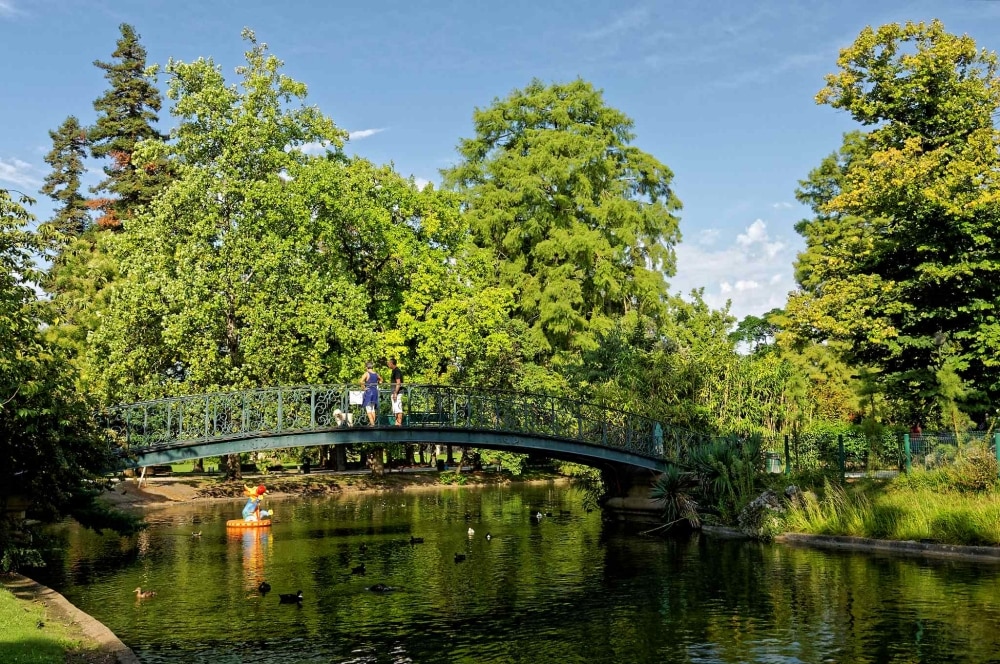
The Bordeaux Park
Further out, a little less central, Parc Bordelais stretches wide. Bigger, wilder in spots. More open sky between the trees. Families often arrive with baskets and bikes, joggers trace loops around the shaded paths, and dogs tug gently at their leads. It’s a place that doesn’t need dressing up.
Facilities for the whole family: Children fan out fast—there’s a large, fenced playground with plenty to climb and crawl under. A miniature train circles slowly, to the delight of parents who need a break. Further in, basketball and football courts wait for a bit of action, and benches are never far off. Ponds flicker in the sun, and ducks come close if you stand still. It’s not about doing much—just being out, letting the day unfold slowly.
The Park of the Ermitage Sainte-Catherine
Above the city, where Bordeaux tilts into silence, the Parc de l’Ermitage Sainte-Catherine offers something quieter. Fewer crowds. More birdsong. Eight hectares of slopes and scrub, meadows and shadowy groves. The views, when the sky clears, stretch all the way across the Garonne.
Nature and relaxation activities: There’s a rhythm to walking here that doesn’t rush. Trails loop through the woods and wetlands, past open clearings where the sun lands just right. Information signs tell you what’s growing nearby, what birds you might spot if you look up. Tables sit under trees—picnic spots that seem to have waited for someone to notice them. In the late afternoon, especially as the sun drops, photographers tend to linger. It’s not about the perfect shot. It’s about the way the city glows from here.
The Quays of Bordeaux
Down by the water, things move at a different pace. The quays stretch for kilometers, tracing the Garonne like a long, steady breath. Walkers, skaters, cyclists—they weave past each other in silence or laughter, depending on the hour.
Ideas for walks and leisure activities: Start anywhere. The Place de la Bourse catches light differently at every hour. The Water Mirror ripples with passing feet. Further along, the old Chartrons warehouses have turned into places to sit, sip, browse. Market stalls pop up weekly—cheese, bread, flowers, the occasional accordion. For children, the playgrounds appear without warning, tucked among benches and greenery. Cafés line the way too, with terraces that invite you to forget time. If the weather holds, stay. If it doesn’t—stay anyway. Bordeaux by the river has a way of pulling you in, slowly, until you don’t want to leave.
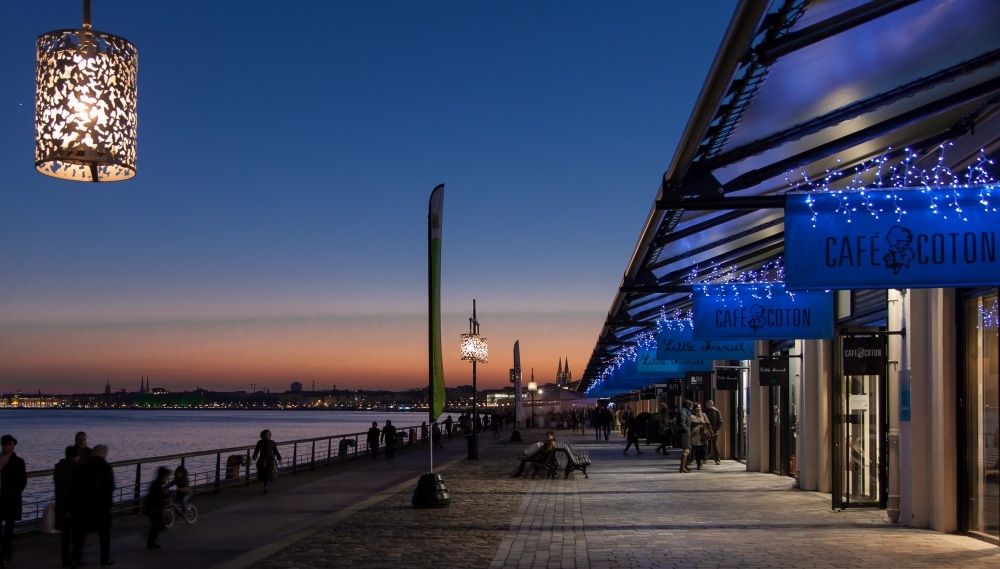
Bordeaux gastronomy
Bordeaux gastronomy doesn’t try too hard to impress—it doesn’t need to. The flavors speak for themselves. Born from rivers, vineyards, and quiet kitchens passed down through generations, the region’s cuisine leans into depth rather than flash. It’s not about trends, but about knowing what works and why. From the humblest bistro to Michelin-lit tables, Bordeaux has something to say to anyone who listens with their taste buds.
Culinary specialties
A few dishes always come up first, and rightly so. The entrecôte à la bordelaise, rich with shallots and red wine, appears simple at a glance. But the sauce—deep, lingering—says otherwise. Then there are the cannelés. Crisped at the edges, custardy inside, small enough to feel light, but never forgettable. And from the coast, oysters. Cold, mineral, touched only by lemon or a dry white wine. They don’t need more. None of it does.
The Best Restaurants
Bordeaux isn’t short on places to eat, but a few stand out—not just for the food, but for how the meals feel once they’re over. Some spots to know:
- Le Chapon Fin : Founded back in 1825, this place still holds its ground with quiet confidence. An elegant setting, yes, but the attention stays on what’s on the plate.
- La Tupina : It smells like wood fire and old recipes. Think duck breast, lamprey, things cooked slowly and without shortcuts.
- L’Entrecôte : One dish, done right. No menus to flip through. Just entrecôte, crisp fries, and a mustardy secret sauce. No need to overthink it.
- Le Petit Commerce : Fresh seafood served without ceremony, in a room full of noise and steam and laughter. Come with friends or find a table alone—it works either way.
- Le Pressoir d’Argent : If you’re looking for refinement with a capital R, this Michelin-starred spot inside the Grand Hotel delivers. Carefully plated, thoughtfully balanced, unmistakably high-end—but not without soul.

The Wine Route
The Bordeaux Wine Route isn’t one road—it’s a tangle of stories, estates, and landscapes that shift with the light. Some travelers show up with a list of names. Others let the roads decide. Either way, the experience lingers long after the last glass.
- Visits and tastings: Start with the Médoc. Castles with old stone facades and gravel driveways, names like Château Margaux and Château Lafite Rothschild. Their wines speak of time, of patience, of the land itself.
- Recommended routes: Head south to the Graves and Sauternes. Here, reds carry weight, and the whites—especially the sweet ones—taste like nothing else. Try Château Haut-Brion if you can, or Château d’Yquem, where the balance between sugar and acidity is something close to magic.
- Other destinations: Saint-Émilion feels like stepping into a painting. Stone houses, winding streets, vineyards on slopes that catch the last rays of the sun. The wines—Cheval Blanc, Angélus—mirror the place. Complex, but calm.
- Additional activities: Some châteaux go beyond the glass. Vineyard walks at dusk, cooking classes that start in the garden, open-air concerts between the vines. Even if you don’t drink, there’s something to take in. Something quiet and deeply rooted.

